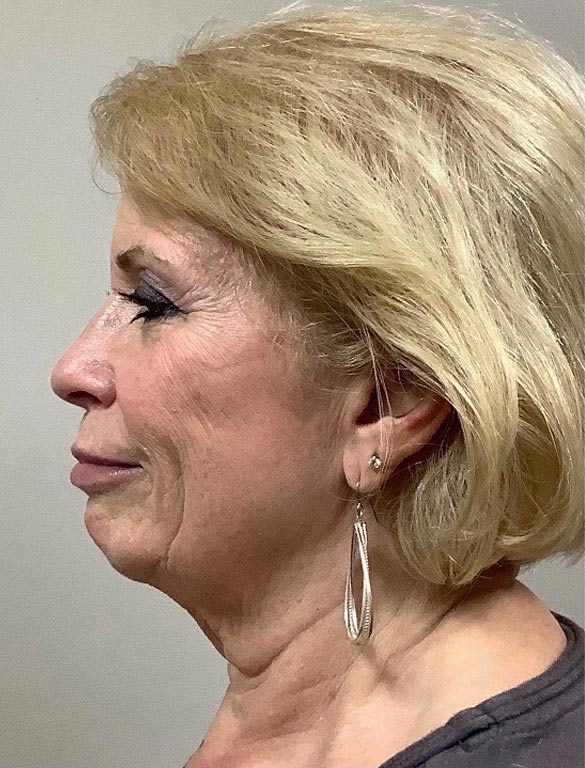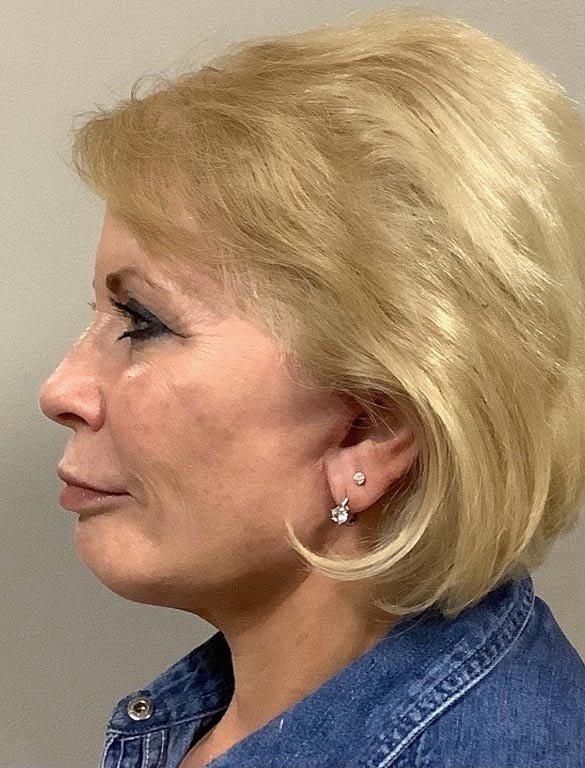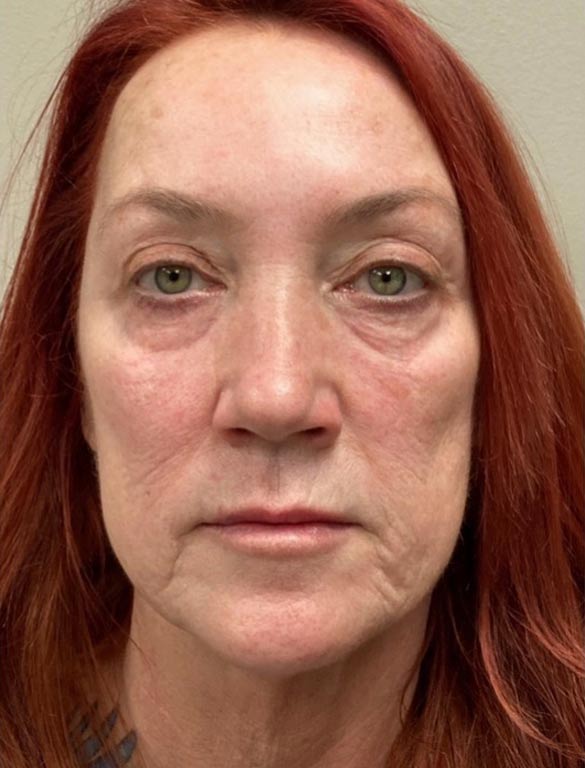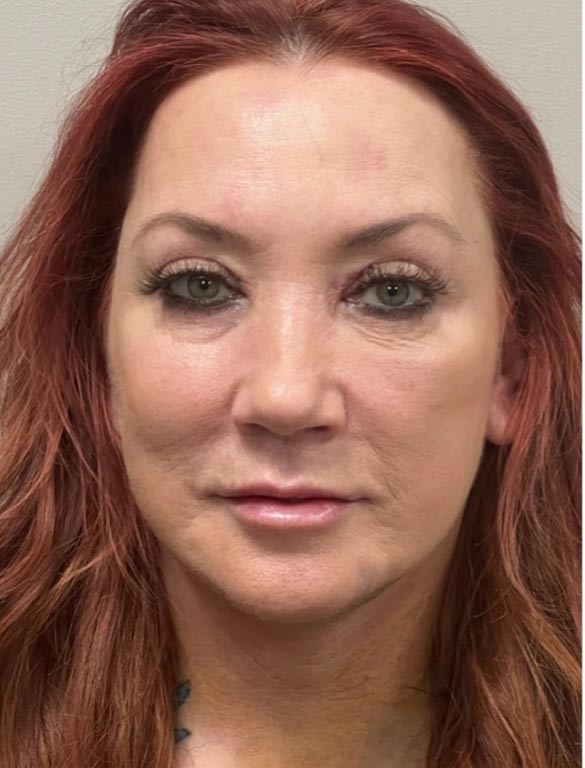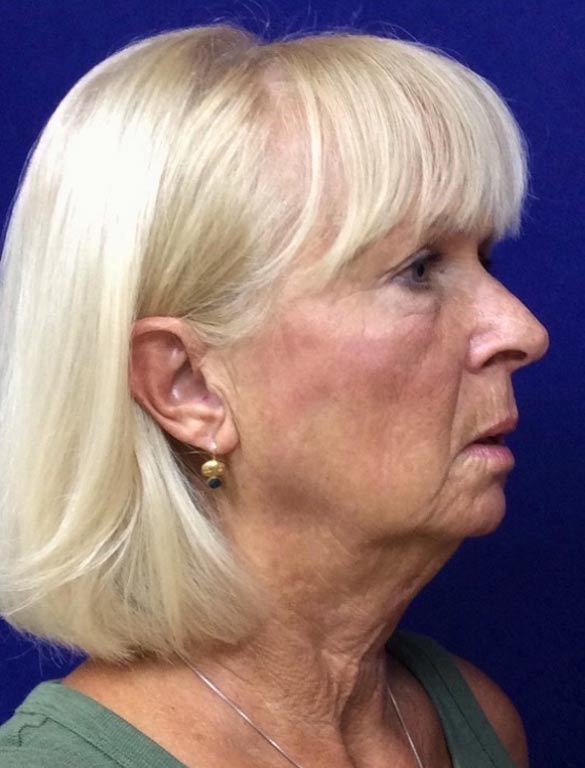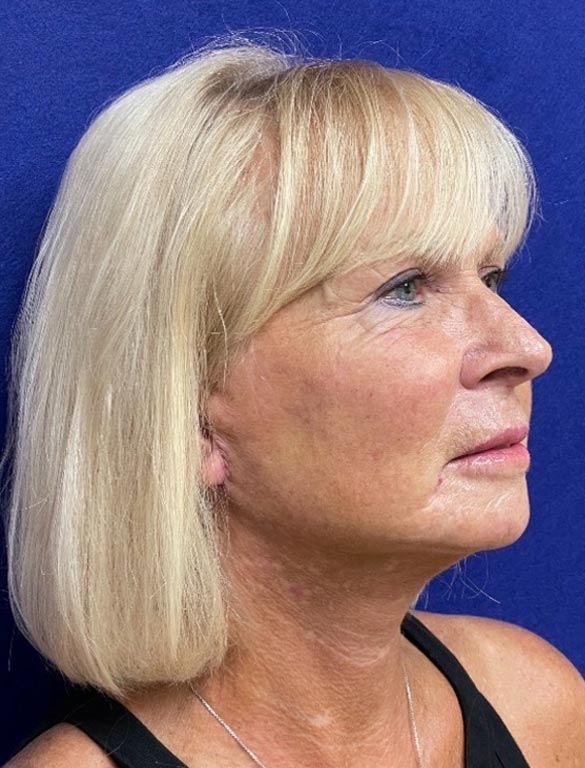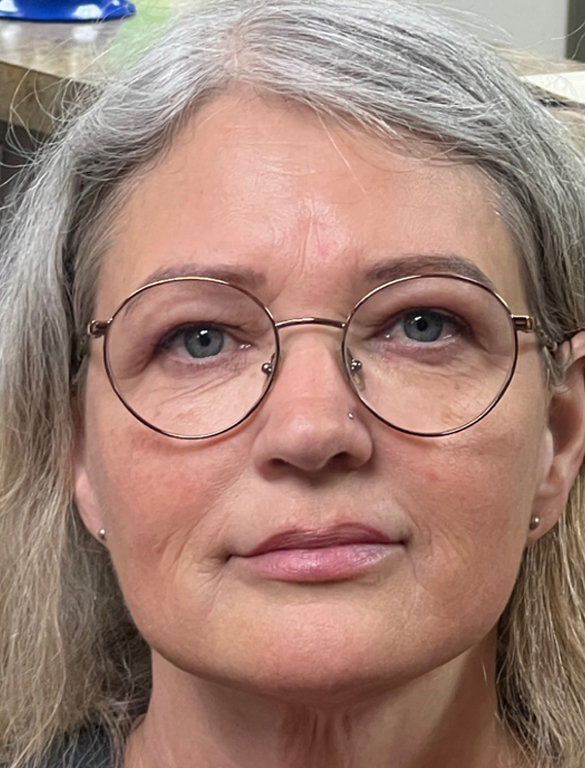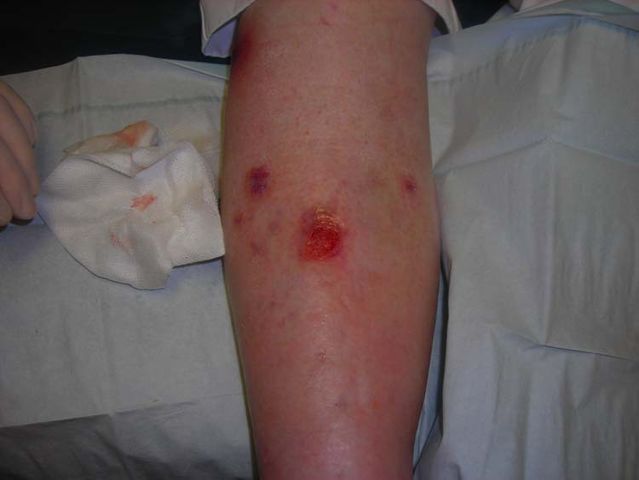Venous insufficiency comes in 6 clinical stages, starting with Stage 1, spider veins, and ending with Stage 6, venous ulcers. Venous ulcers can be treated…the fifth clinical stage is the healed venous ulcer…but can be extremely painful and should be avoided if at all possible. Any vein disease left untreated can lead to skin ulcers, so seeking treatment by a licensed physician experienced in vein disease is of the utmost importance.
Contents
What are venous ulcers?
An open sore on the leg that takes a long time to heal and generally appears below the calf but above the ankle is considered a venous ulcer. Caused by untreated vein disease, where the blood is not returning to the heart the way it should, it can return again and again if the underlying problem is not resolved. Another term for venous ulcers is ‘stasis leg ulcer’.
Am I at risk for developing venous ulcers?
Everyone can develop venous ulcers, but your risk increases if you fall into one of the following categories: if you are overweight, a smoker, live a sedentary lifestyle or are in an occupation that requires you to be on your feet for many hours at a time, you will have a higher risk of developing ulcers. People over 40 are at an increased risk, and those over 60 are even more at risk. Finally, if you have already been diagnosed with Deep Vein Thrombosis (DVT) you are also at a higher risk for developing venous ulcers.
What are the symptoms of venous ulcers?
Venous ulcers develop in stages. During the first stage you may notice that the skin of the affected area becomes red, or even purple, as it thickens and becomes increasingly itchy and dry. During the second stage, the area becomes swollen and painful as the ulcer starts to appear. In the third and final stage, the ulcer can become infected and start to smell as pus develops; you don’t want to let it get to this stage. Consult your physician as soon as you start to notice any changes that resemble the beginning stages of venous ulcers.
Are venous ulcers dangerous?
Any disease left untreated can be dangerous and venous ulcers are no exception. Untreated skin ulcers can lead to surgery, skin grafting, and in extreme (yet rare) cases, amputation.
What treatments are available?
Because the underlying cause is due to poor circulation, some of the easier treatments involve compression garments, daily walks and resting with the leg elevated above heart level. A doctor may have to remove dead tissue from the wound and sometimes medications are prescribed, especially if infection has set in. Skin grafts may be necessary for extreme cases and to prevent ulcers from recurring, vein treatment can be required.
The Skin & Vein Center
Schedule your consultation with the Skin & Vein Center today and be on your way to a healthy vein lifestyle.
Photo By Jonathan Moore – Creating the Ideal Microcosm for Rapid Incorporation of Bioengineered Alternative Tissues Using An Advanced Hydrogel Impregnated Gauze Dressing: A Case Series. The Foot and Ankle Online Journal 1 (9): 2., CC BY 3.0, https://commons.wikimedia.org/w/index.php?curid=6886410

